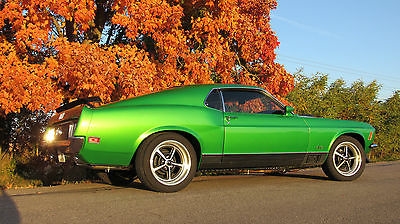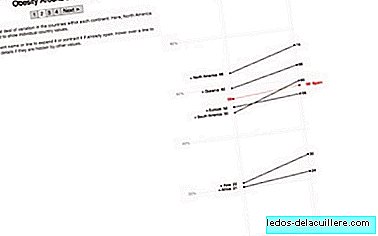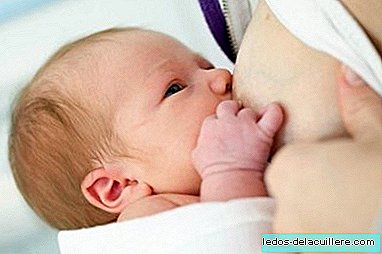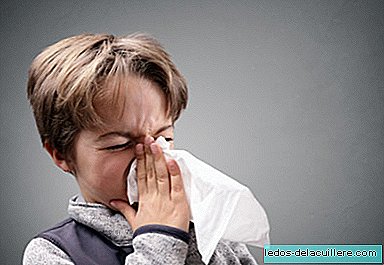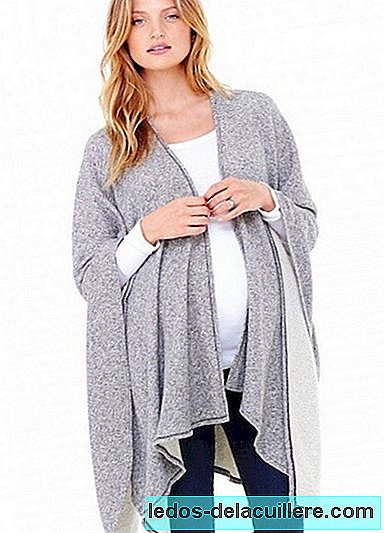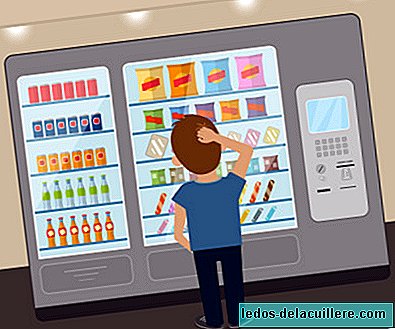
When we have sometimes found ourselves in need of a snack at an unplanned moment and we have gone to the vending machines, we have encountered difficulties in choosing a product that is not too sweet, too salty, with too much trans fat ... If the vending machines were healthier, we could tell our children to choose what they wanted.
But, how would this ideal machine be that would ensure our health? The World Health Organization recognizes the relationship between obesity and high consumption of highly energetic and nutrient-poor foods, so it should be limited: soda, candy, candy, popsicles and sorbets, chocolates and industrial salty snacks ...
Specifically, according to "Consensus document on food in schools" Prepared within the NAOS strategy of the Government of Spain, following the criterion of limiting the content of fats, sugars and salt, the remaining food and beverages distributed in schools must meet the following nutritional criteria per packaged or marketed portion:
- A maximum energy value of 200 kilocalories.
- A maximum of 35% of kilocalories will come from fat. For a portion with less than 200 kilocalories, this is equivalent to a maximum content of 7.8 grams of fat (this limit will not apply to whole milk and yogurts or nuts without added fat since it is naturally present fat in them, and they are foods that have a great nutritional interest that should not be missed in school children).
- A maximum of 10% of kilocalories will come from saturated fats. For a portion of 200 kilocalories, this amounts to a maximum content of 2.2 grams of saturated fats (the same observation is made from the previous point).
- Absence of trans fatty acids, except those present naturally in dairy and meat products.
- A maximum of 30% of kilocalories will come from total sugars. For a portion of 200 kilocalories, this amounts to a maximum content of 15 grams of sugars. This limit shall not apply to fruit and vegetables, whole or minimally processed, fruit juices and fruit juices based on concentrates that do not contain added sugars, since these are naturally occurring sugars in food. In milk and milk products, the naturally occurring sugar (lactose, approximately corresponds to 4.8 g / 100ml) will not be counted.
- A maximum of 0.5 g of salt (0.2 g of sodium).
- They will not contain artificial sweeteners.
- They will not contain caffeine or other stimulants, except those naturally present in cocoa.
These criteria seek to promote the consumption of foods and beverages considered healthy among students (fruits, vegetables and products rich in calcium and fiber) and limit the abusive consumption of certain nutrients to avoid exceeding the recommended daily intakes.

What does a healthy vending machine carry?
According to the Spanish Federation of Societies of Nutrition, Food and Dietetics (FESNAD), based on international criteria about the high content of fats, sugars or salt in food, these are foods that may be in a healthy vending machine:
Bottled waters, varieties recognized by legislation. Waters containing those aromatic agents and / or sweeteners, included in the category of soft drinks are not considered waters. However, it is recommended that access be free from water sources or retailers.
Milk in any of its presentations (whole, skimmed and semi-skimmed) and conservation forms.
Dairy products (fermented milks, yogurts, milkshakes, etc.) made from whole, skimmed or semi-skimmed milk, containing no more than 12.3 g of sugar / 100 ml (4.8 g lactose + 7.5 g of added sugars) or 24.6 g of sugar per 200 ml container (9.6 g of lactose + 15 g of added sugars).
Cheeses with low fat content and not exceeding the limit established for salt.
Fresh fruits, whole or minimally processed, that do not contain added sugars.
Fruit juices and concentrated fruit juices that do not contain added sugars. Fruit nectars and mixed fruit and milk drinks are not included by the incorporation of added sugars or artificial sweeteners in these products.
Vegetable-based beverages containing at least 50% of vegetables and without added sugars or artificial sweeteners.
Breakfast cereals and cereal bars provided they meet the established criteria for fats, sugars and salt.
Cookies and pastries, when they meet the established criteria for fat content, especially saturated, and sugars.
Nuts that do not contain sugars or added fats (neither fried nor roasted with oil) and whose salt content does not exceed the established limit. They must be presented in a suitable container size so as not to exceed the maximum energy value.
Ice cream, preferably made with milk, provided they meet the established criteria for fats and sugars.
Sandwiches, provided they meet the established criteria for fats, salt and sugars.
Snacks, preferably made with whole wheat bread. Most are prepared at the point of sale and, therefore, do not carry a label, but since they are mostly made of bread, in principle they do not offer an excessive supply of fats, sugars and salt.
Bakery products (colines, toasts, etc.) provided they meet the established criteria for fats, sugars and salt.
The exclusion of food and beverages with low nutritional value from educational centers (not only in machines, also in the dining room menu or in canteens in the centers they have) is fully justified and could be extended to other machines in places such as hospitals, airports ... Surely Among the offer there is something that children prefer and that is not harmful to their health.


